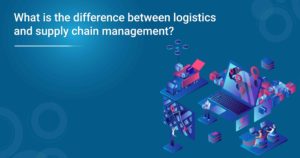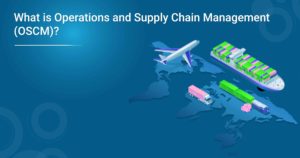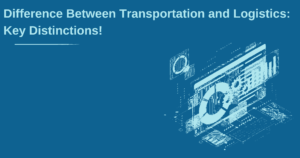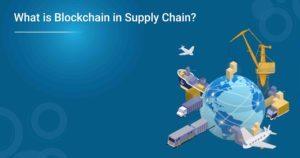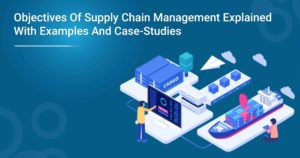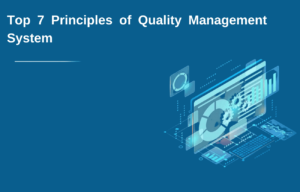Difference Between Transportation and Logistics: Businesses rely on transportation to move goods and materials from one location to another. It can involve shipping goods by land, sea, or air. Once the goods have been transported to their destination, logistics takes over to ensure that they are stored and distributed correctly.
Transportation is vital to any business operation, but it is only a piece of the puzzle. For goods to reach their final destination, businesses must also carefully plan and execute their logistics operations. By working together, transportation and logistics can ensure that goods arrive safely and on time.
What is Transportation?
Transportation is moving people or goods from one place to another. It can be done by air, land, or water. The main feature of transportation is that it enables people and goods to move from one place to another.
Logistics, on the other hand, is the planning, executing, and controlling of the movement and storage of people or goods. The key distinction between transportation and logistics involves planning and coordination. In contrast, transportation simply refers to moving people or goods from one place to another.
There are some essential features of the transportation industry. These include:
- Safety: Ensuring people and goods are moved safely from one place to another.
- Efficiency: Reducing costs, time, and energy by optimizing the movement of people or goods.
- Sustainability: Reducing environmental impacts associated with the transportation of people or goods.
- Reliability: Providing dependable delivery of people and goods promptly.
- Accessibility: Providing convenient access to transportation services for all users regardless of their location or mobility needs.
The transportation industry is constantly evolving to meet the changing needs of society. As new technologies emerge, such as autonomous vehicles, drones, and hyperloop systems, they will continue to shape the future of transportation by making it safer, more efficient, and more sustainable.
What Is Logistics?
In business, logistics can be described as moving goods and materials from one location to another efficiently and effectively. The term is often used interchangeably with transportation, but some key distinctions exist.
For one, transportation is just one element of logistics. A complete logistics solution also includes storage, packaging, and distribution. In other words, logistics coordinate all these different elements to get goods where they need to go.
Another key distinction is that logistics covers domestic and international shipments, while transportation usually refers to domestic shipping. This is because international shipping involves extra complexities, such as customs regulations and documentation.
Finally, logistics also encompasses reverse logistics or the process of returning goods to the original point of shipment. This might happen if a product is defective or needs to be recalled for some other reason.
So, in summary, logistics is a broader term that covers all aspects of getting goods from point A to point B, while transportation refers specifically to the physical act of moving those goods.
Some of the features of logistics:
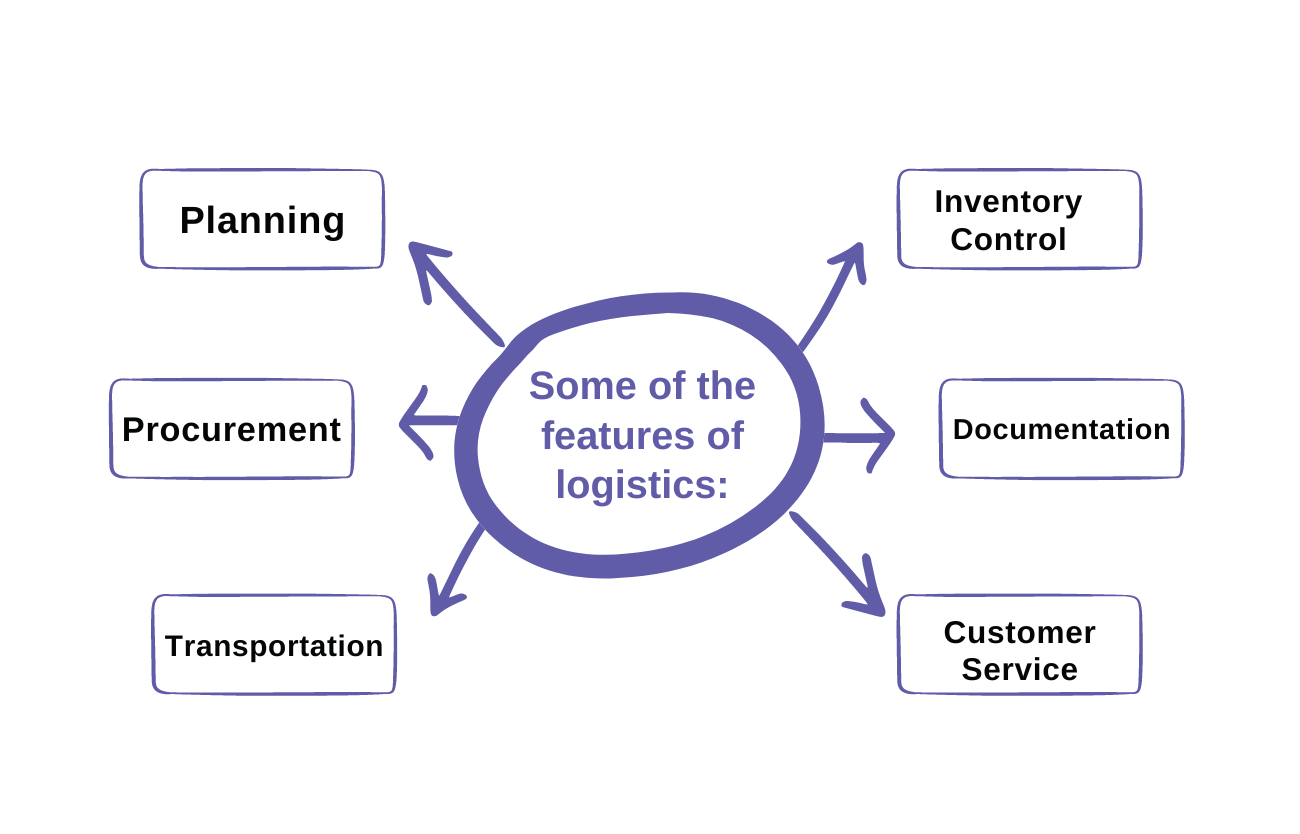
- Planning: This involves developing a strategy for transportation, warehousing, and distribution of goods. It requires identifying the most efficient routes and methods to get goods to their destination.
- Procurement: Logistics includes purchasing services or materials needed for transportation, such as trucks or planes. This step also includes obtaining the necessary permits and licenses to move goods across borders.
- Transportation: This is the actual act of moving goods from one location to another. It could involve ground, air, or sea transportation depending on the needs of the shipment.
- Inventory Control: Logistics involves managing inventory levels in warehouses and other storage facilities to ensure enough stock is available when needed.
- Documentation: Documentation is key when it comes to international shipments. Logistics managers must make sure that all documents are in order and comply with customs regulations.
- Customer Service: Providing good customer service is vital in logistics management. This could involve responding quickly to inquiries about shipments or tracking orders for customers.
Examples of Transportation & Logistics
There are different types of transportation and logistics companies out there. Some specialize in one particular mode of transportation, while others offer a variety of services. Here are some examples of transportation and logistics companies:
Airfreight Logistics: This type of company specializes in shipping goods via air. They have a network of contacts with airlines and airports, and they are experts in the packing and loading of goods onto aircraft.
Ocean Freight Logistics: These companies specialize in shipping goods by sea. They have access to a fleet of ships and containers and know how to load and unload cargo safely. They also have experience dealing with customs regulations.
Rail Freight Logistics: These companies specialize in shipping goods by rail. They have a network of contacts with railway companies and are experts in loading and unloading cargo onto trains.
Trucking Logistics: These companies specialize in shipping goods by road. They have a fleet of trucks and trailers and know how to load and unload cargo safely. They also have experience dealing with customs regulations.
Difference Between Transportation & Logistics
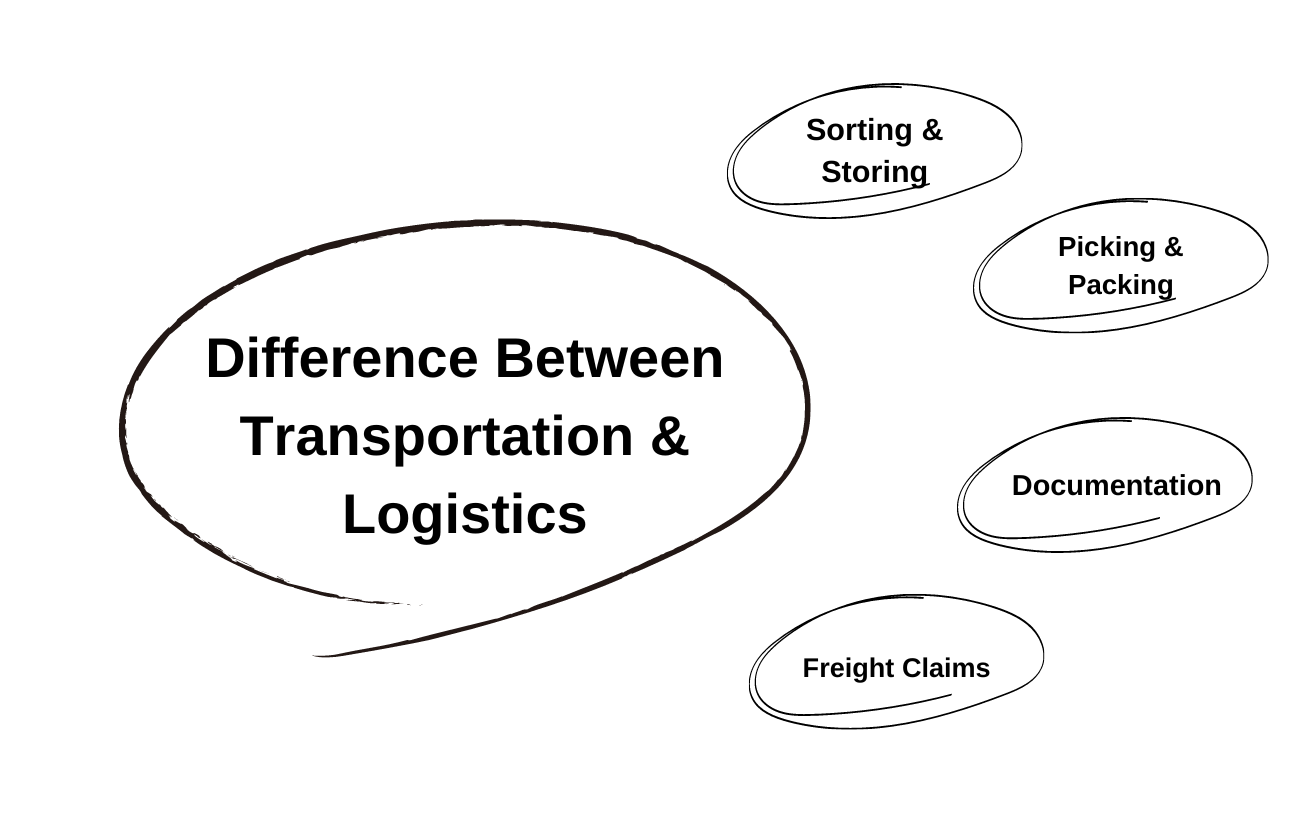
Sorting & Storing
Transportation and logistics are both essential components of the supply chain, but they have distinct differences. Transportation is the physical movement of goods using a variety of different means, including trucks, ships, trains and aeroplanes.
Logistics, on the other hand, refers to the management process that coordinates all aspects related to transportation, such as inventory control, warehousing and order fulfilment. Sorting is an essential factor in both transportation and logistics processes.
In transportation, sorting typically involves grouping shipments according to their destination or customer requirements for efficient delivery. For instance, military equipment may be sorted into separate containers for transport overseas while medical supplies could be sorted by type before being loaded onto an aeroplane bound for disaster relief areas.
Sorting also has relevance in terms of cost savings – grouping shipments together can often reduce overall costs associated with shipping and handling fees. Storing is also a critical factor in transportation and logistics operations as it allows companies to maintain a consistent inventory level while minimizing time spent looking up orders when fulfilling them.
Companies will often store items at warehouses strategically located near major airports or highways so that they can quickly access them when needed without having to pay costly delivery charges each time an item needs replenishing or filling customer orders quickly upon request.
Additionally, storing items properly helps protect them from damage during transit so that customers receive quality products every time they purchase something online or through traditional retail outlets.
Overall, sorting and storing play key roles in both transportation and logistics processes, but how these two tasks are carried out varies depending on what kind of industry one operates within and its specific supply chain needs.
It’s important, however, that any company engaging in either activity stays up-to-date on best practices regarding safety protocols (e.,g., proper loading techniques), storage standards (i.,e., temperature-controlled facilities) etc., if it wishes to remain competitive within today’s global marketplace where speed accuracy reliability all matter significantly more than ever before
Also Read: What is supply chain analytics? Importance, usage & examples
Picking & Packing
Picking and packing is an essential factor that differentiates transportation from logistics. It is a process in which goods are selected, organized, packaged and shipped to their destination. Picking and packing require careful planning and coordination between the shipper, receiver, carrier, supplier, and other third-party providers.
In transportation, picking and packing involve selecting the most appropriate method of transport for the goods being shipped (airfreight or ocean shipping) based on cost-effectiveness, transit times and other relevant factors such as customs clearance requirements. Depending on the cargo’s size, shape, or weight, constraints may also need to be considered when choosing a mode of transport.
Once this has been settled upon, it is necessary to ensure that all required documents are prepared correctly according to international standards so that there will be no delay in clearing customs at both ends of the deal.
When it comes to logistics, however, picking and packing play a more complex role than just deciding upon methods of transport; they form part of an intricate supply chain network whereby goods have multiple pick-up points along their journey before reaching their intended destination without fail.
This can involve collection from multiple suppliers who must pack each shipment appropriately with barcodes assigned for tracking purposes throughout its journey until delivery takes place at its final stop point.
Documentation
Documentation is an essential factor of difference between transportation and logistics. Documentation plays a vital role in transporting goods from one place to another or distributing them properly, making it easy for businesses and consumers.
Regarding transportation, documentation is used to record accurate information about the route taken by each shipment, including any stops along the way, delivery times and dates, and tracking numbers for each package sent out.
This helps ensure that every aspect of shipping goes according to plan and that no delays occur due to incorrect paperwork being filed or forgotten shipments not arriving on time. It also ensures customers are kept updated on their purchases so they can track progress themselves if necessary.
As far as logistics go, documentation becomes even more important since it needs to include all aspects related to planning, such as:
- Inventory management systems allow companies to keep track of stock levels throughout the supply chain.
- Schedule optimization tools help them determine how best to allocate resources efficiently.
- Pricing policies that establish what cost needs to be paid at various stages within a system
- Order processing software which allows customers’ orders quickly be fulfilled accurately.
- Customer relationship management (CRM) systems assist businesses to manage customer data effectively etc.
All these documents must be recorded accurately for operations to run smoothly without any problems arising during transit or when goods reach their destination safely.
Without proper documentation, unforeseen costs could easily arise due to incorrect invoicing or, worse still, shipments going astray, resulting in losses incurred on behalf of the company or consumer who had purchased the product!
Also Read: Top 16 Supply Chain Management Interview Questions & Ans
Freight Claims
Freight claims are an essential factor of difference between transportation and logistics. Freight claims refer to filing a legal document against a carrier for damages or losses incurred during transit. In essence, it is the shipper’s way of making sure they get compensated when goods are damaged or lost while in transit.
The importance of freight claims lies in their ability to protect shippers from financial damages due to transport-related issues such as cargo damage, delay, derailment and other kinds of accidents and incidents that can occur during shipping. This makes them essential for any business in the transportation industry and those who depend on efficient supply chain management processes.
When it comes to the differences between transportation and logistics, freight claim-related activities often take place within the scope of logistics services rather than transportation itself.
Logistics professionals play an important role in preparing all necessary documents related to freight claims before submitting them to carriers and insurers so that any losses businesses suffer through damaged shipments can be minimized or eliminated if possible.
In addition, logisticians ensure timely submission and follow-up on these documents, which helps speed up payment settlements should there be any discrepancies between what was expected by the shipper and what was received at the destination point(s).
Overall, understanding how freight claims work is a critical aspect for anyone involved in either transportation/logistics sectors simply because they represent one form of protection available when dealing with less-than-ideal transport conditions – something no business owner wants but must nonetheless remain prepared for just in case anything goes wrong along the way.
Conclusion
In conclusion, transportation and logistics are two related but distinct concepts. Transportation is moving goods from one location to another, while logistics involve planning and efficiently managing this movement. Understanding the differences between these two functions can help businesses save time and money by optimizing their supply chain operations. With a well-executed strategy, companies can ensure that their goods reach the right place at the right time without any unexpected delays or disruptions.
More Information:
What is Supply Chain Consulting? Meaning and Frameworks
What is Supply Chain Finance? A Detailed Analysis
Supply Chain Modeling: Types, Models and Best Practices
Supply Chain Management And Retail Industry: An Essential Relation












